
What is Experiential Content and How to Use It


As a marketer, you already know that consumer behavior is constantly shifting. Making your content more fun, engaging, and valuable can lead to big wins in content marketing. It not only helps build a stronger personality of your brand, but also drives immense awareness and conversions.
And experiential content is key in today’s marketing strategy.
People like to engage in a way that allows them to be a part of something instead of being merely presented with products and services via a screen. Sure, highlighting the benefits of your brand and showcasing the value proposition is crucial.
However, when you deliver an experience that truly connects with your consumer across touchpoints, formats, and devices, you can build meaningful relationships that further drive your conversions.
According to Forrester, 77% of consumers have recommended, chosen, or paid more for a brand that provides a personalized service or experience.
Furthermore, 98% of consumers are more inclined to make a purchase after an experience. And, over the years, the US has seen around four times more spending on experience-related services than on goods.
The data emphasizes that consumers today expect more content for fluid experiences and this impacts their purchasing behavior.
But what’s the best way to stand out? How to create experiential content that delivers personalized experiences and satisfy the consumers’ desire for stronger relationships with a brand before making a purchase?
To help you get answers, we have created this handy guide that helps you go over everything you need to know about experiential content, and look at some examples of brands who already reap the benefits of it.
At its core, experiential content is a way of communicating a story, or a compelling narrative about your brand that helps you stand out from the crowd.
More than just promoting products to a passive audience, experiential content helps you create engaging experiences that consumers can actively take part in. That way, consumers can resonate better with a brand’s identity and core values in a tangible way.
Experiential content is all about educating, inspiring, and creating a lasting impression to build a positive relationship with consumers.
By adding context and understanding the customer’s journey, you can create the most relevant brand experiences that increase your customer loyalty and direct sales. Experiential content can be baked in both offline and online marketing strategies.
A great example is the opening of the D Rose Jump Store in London by Adidas. As part of the campaign, the store had its grand opening by the NBA superstar Derrick Rose. What really stood out was the 10-foot-high shelf that had dozens of pairs of Rose’s signature sneakers.
Even cooler? If anyone could make the jump and reach the sneakers, they could take them home. Simple as that.

This store helped shoppers get a sneak peek into the professional basketball player’s life and experience the NBA frenzy for themselves instead of watching it on a screen. It was a fun, unique experience for their customers and an interactive way around Adidas’s message of athleticism and peak performance.
Takeaways for marketers:
There’s often a misconception around experiential content that it’s only made for big events or run by large companies. That’s not the case. For small businesses, experiential content is a golden nugget they can integrate throughout their customer’s journey to communicate their story.
If you can deliver great experiences from early on, it can be a key differentiator for your brand in your industry. Especially if you’re a small business, you can create lasting memories that turn your prospects into customers and then into loyal ambassadors who vouch for your brand.
Think about it. You may be in a competitive niche and so, your product or features alone aren’t enough to make your brand stand out. With experiential word of mouth being the most common and powerful form of catalyst, it accounts for typically 50-80% of word-of-mouth activity in any given product category.

The benefits of experiential content are quite clear: It’s a fantastic way to engage with your audience, build brand loyalty and stand out from your competitors. The more time your users spend on your website, the more they’re likely to come back and make a purchase.
Furthermore, many types of experiential content allow marketers to easily capture data for lead generation. That way, you can use these insights to guide your future content marketing efforts, helping you drive your engagement and build loyal brand advocates.
With that in mind, it’s time to share real-life examples of how you can use experiential content in your marketing strategy.
People remember 65% of the information they see in a visual. With infographics improving reading comprehension by over 50%, it comes as no surprise that 67% of B2B marketers are creating and sharing infographics to fuel their marketing efforts.
Pretty amazing. Also, infographics are 30X more likely to be read from top to bottom as compared to blog posts or articles. Let’s be honest. Would you rather read a 2,000 word article or quickly get the same amount of information in an infographic?
But it’s worth pointing out that there is a lot of competition today, so merely publishing an infographic isn’t enough. To stand out, you need to engage users by baking in experiential content into your infographics.
Infographics typically have a low barrier to entry, and are much easier to create. But if you’re going in the experiential direction, it might take some more time and effort. A good idea is to consider using a tool like Visme that helps you create interactive content without overwhelming you.
Take a look at these experiential infographics IBM created using Visme. You can click on the “Apply Now” button to directly apply to their open job positions, watch a video about the company, and even follow them on their social handles.
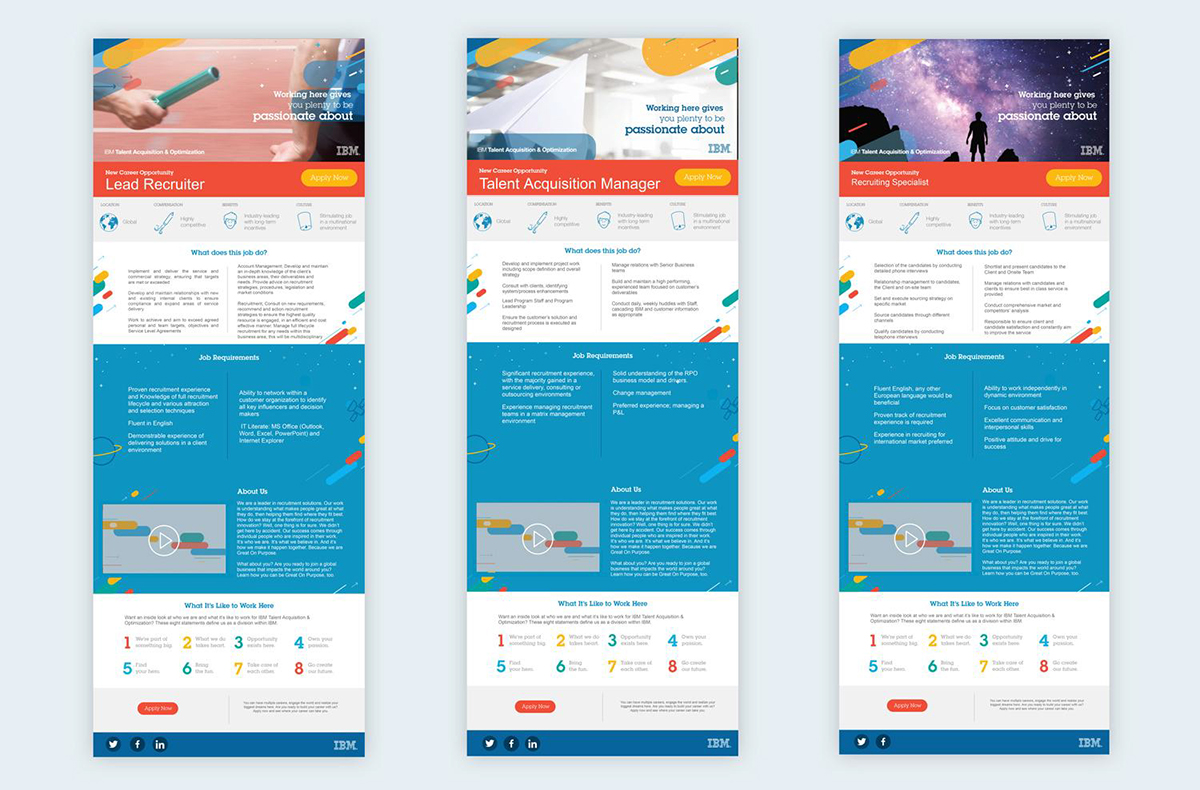
Creating videos has become much easier and accessible. Marketing teams don’t require a large production budget or even hire professional videographers with expensive video editing software to produce short, engaging, and interactive videos.
With 85% of businesses using some form of video in their marketing campaigns, and 87% of marketers believing that video provides a positive ROI, it’s a must-have element in every company’s marketing strategy. And as videos get more immersive, more consumers will engage with them.
This experiential video example from ShowcasePros, a real estate marketing agency, shows how they created an immersive 360 degree video, providing viewers a 3D virtual tour of their real estate properties. The video lets viewers experience the grand architecture, giving them a peek into what could be their future homes.
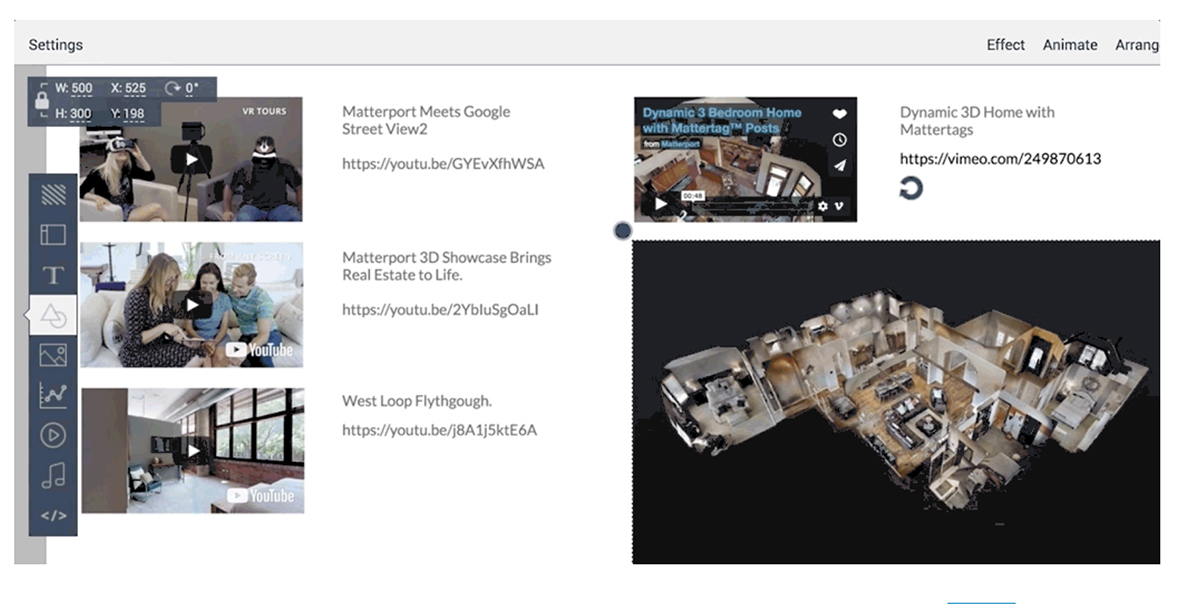
In the art of storytelling, you need to strike the right balance between text and visuals. To better understand why you need to add experiential visuals to your blog posts, let’s discuss some math behind it.
This reinforces that people love scanning content. Start by breaking up large chunks of text into smaller, digestible sentences. Add visuals to highlight the important bits and communicate value to your audience faster.
For instance, you can embed presentations within your blog posts to condense information and long walls of text into smaller, digestible slides. Plus, you can share these presentations across your marketing channels including social media and email, like we did in this post.

To make this process more convenient and scalable, you can choose from ready-made presentation templates in Visme. The easy drag-and-drop editor makes it seamless for anyone, regardless of their design experience, to create engaging, and interactive slideshows that go beyond simple PowerPoint presentations.
Visme allows you to add animations, transitions, pop-ups, rollover effects and even links to turn your slides into an immersive experience. Users can access a rich library of free graphic assets including icons, shapes, photos, illustrations, and more right inside the editor.
Interactive videos and motion graphics allows viewers to actively engage with your content. Furthermore, it helps you provide more value to them, and lets them retain information in ways that text or still imagery can’t accomplish.
62% of B2B marketers plan to use or are already using interactive videos in their marketing strategy. As for consumers, 43% of them prefer interactive video content over other types of video content because it allows them to choose what information they want to see and when they want to see it.
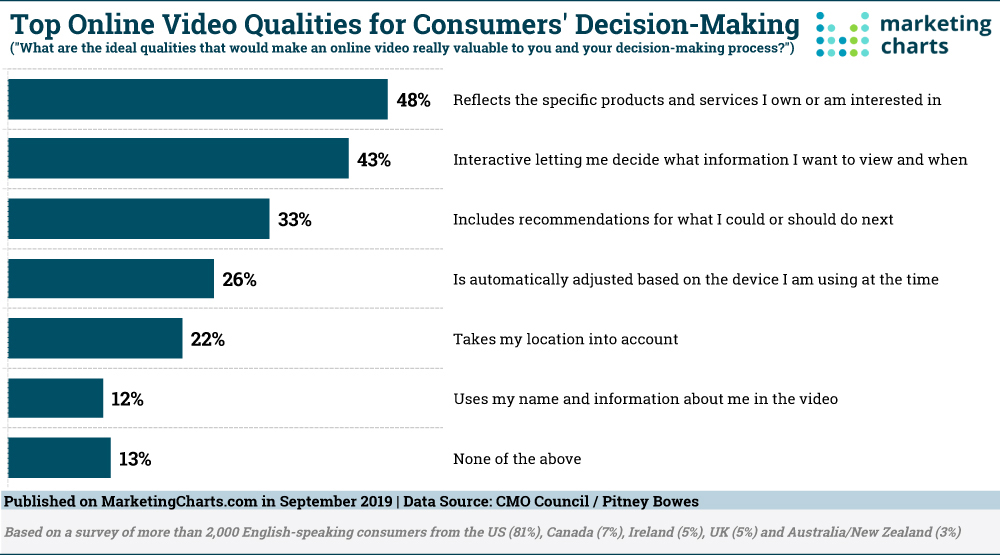
Videos that offer experiential content are dynamic, personalized, and perfect for optimizing your brand experience. Adding interactive elements such as buttons, hotspots, forms and questions can help you educate customers and prospects, accelerate the sales process, and qualify leads much faster.
But there’s a much more concrete reason why marketers love interactive videos — they’re trackable. For the longest time, marketers have had little control and visibility into video analytics.
With interactive videos that deliver experiential content to consumers, marketers can now easily collect data with video form fields and track demographics information, plays, user paths, clicks, dwell time, abandonment ratio, and more.
Case in point: This video by pmwPlus is an explainer video that highlights Australia’s federal government initiatives for small businesses in response to COVID-19.
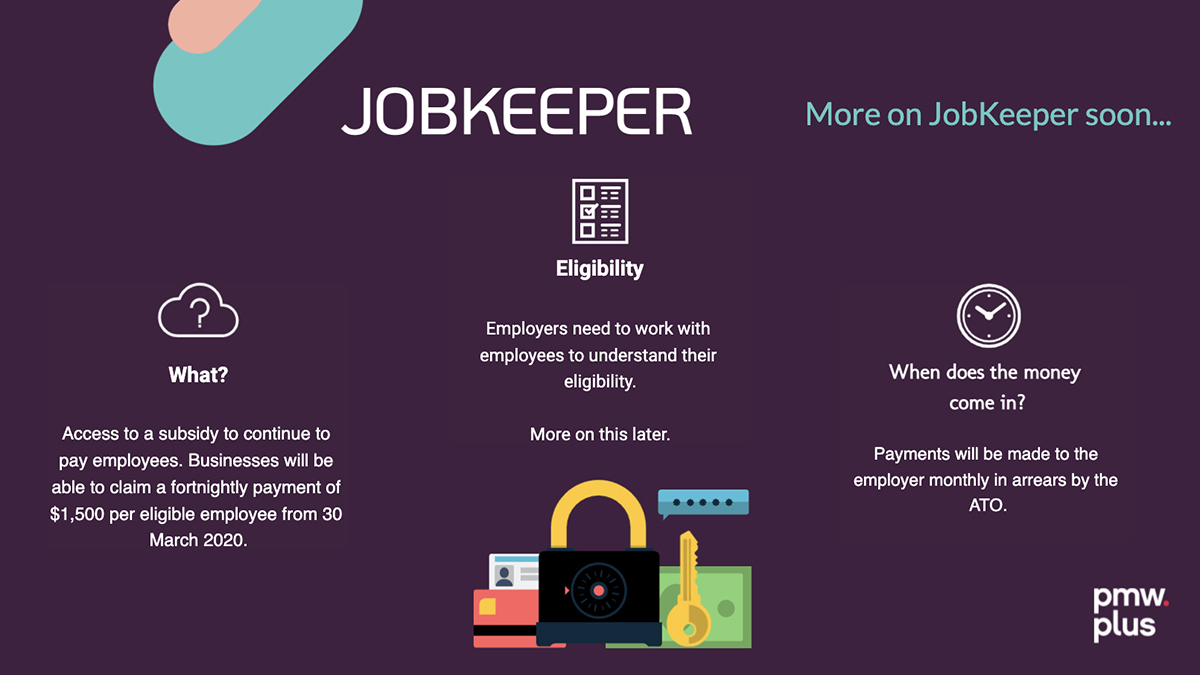
Using Visme, pmwPlus creates branded assets and marketing materials that help set the brand apart from their competition. With one-click animations and pre-designed templates, the team was able to quickly set up their explainer video and grab their users’ attention.
The results? This video is uploaded on their COVID-19 resource page on their website and has become the most visited page in their website’s history.
Reports are one of the most commonly used types of experiential content. By its very nature, reports are a great way to deliver value in the form of educational content to your target audience while also connecting with them. But reports often tend to get long, uninteractive and boring.
To make sure you grab the attention of your users, you need to write your reports effectively and use reports with experiential content that transform complex data points into simpler, more digestible visual information.
Reports allow marketers to get plenty of information about their readers, while giving the most value to them. It’s a win-win.
Just look at how UCLA incorporated interactive elements in their annual evaluation report for their client. They used different graphical elements like icons and color boxes to make the content more attractive and create a flow so the reader’s attention stays intact, without getting bored.
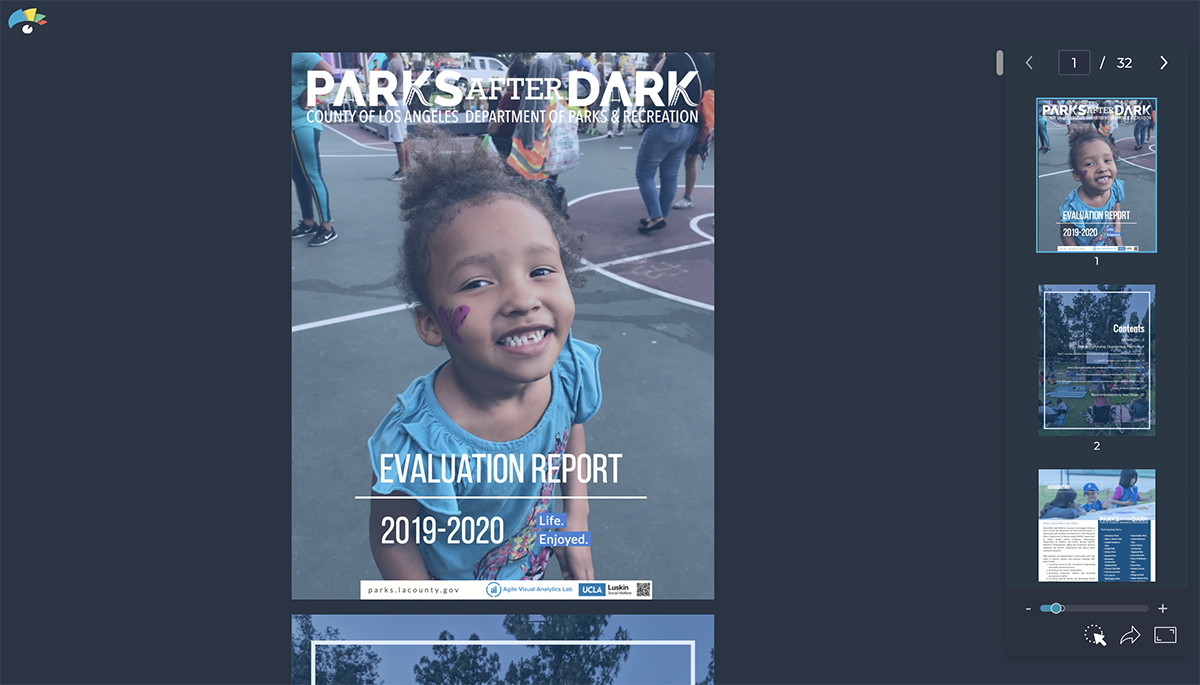
The report consists of in-depth data visualizations and information about the project to create a single, easy-to-understand, interactive report.
As this example shows, you don’t need to use complicated tools or put in hours of work on end in order to create an interactive report. Taking a more easier, and faster route with tools like Visme, you can create just as powerful (if not more) experiential content.
When one of the main goals of experiential content is to provide value to consumers in a short span of time, charts are a natural experiential content element of choice for many marketers.
Charts are perfect for comparing different value sets, and they can easily turn a long, complex process into a set of high and low values in the data sets.
For instance, instead of giving an entire step-by-step breakdown of how you generated sales in the last financial year, you could leverage interactive charts in your reports or even in blog posts to summarize the highlights of the year.
Or you can use interactive comparison charts to showcase the pros and cons of different types of products, helping users make a more informed decision. Remy Tennant, an affiliate marketer and the owner of a health blog, Human Food Bar, created a comparison chart to help his readers understand the difference between various products like keto-friendly protein bars.
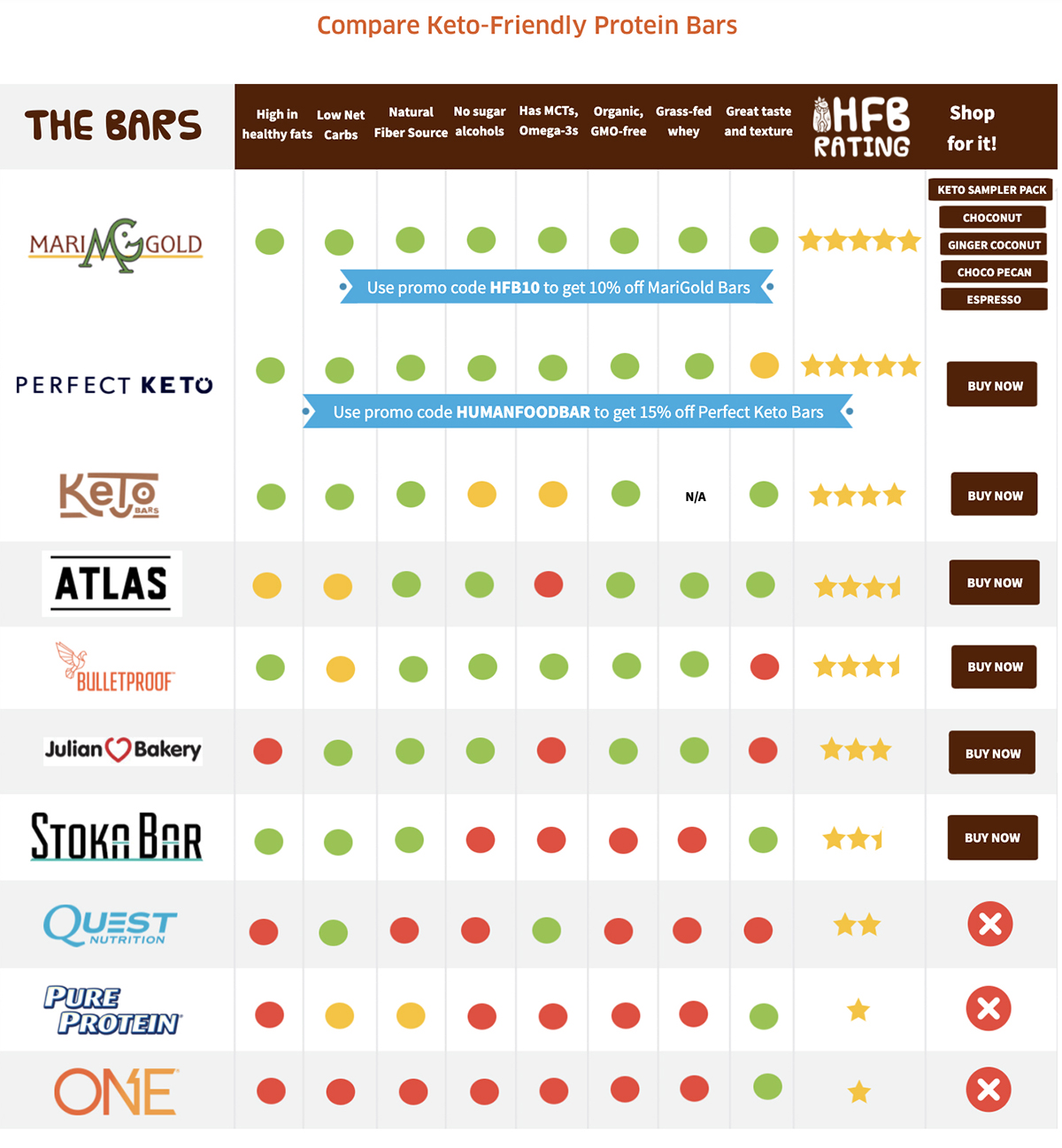
In this comparison chart, when a user hovers over the bar right at the top, they can instantly see tips and explanations pop up. On top of that, there are green flashing arrows and interactive buttons that run along the right side of the chart to further enhance the reader’s experience.
To put this in perspective, creating comparison charts with interactive elements is not an easy feat. It can probably take hours for an experienced designer to create such an experiential content asset. What helped Remy scale his design needs is the fact that he chose an easy to use and powerful tool that perfectly fit his needs.
Polls and surveys are some of the most commonly used types of interactive content that help brands collate feedback, identify what’s working, discover product feature requests, and even optimize their marketing strategy.
Traditionally, polls and surveys used to be a dull affair and quite unappealing to fill out for customers. However consumers’ perception and experience has changed as brands now focus on making their polls and surveys more fun, interactive, and engaging for customers.
The key here is to not ask too much, rather be highly specific with what you want to know from your customer - make sure you’re collecting actionable feedback.
If you’re using Visme, there are two ways to create interactive polls and surveys:
You can easily add experiential content in your polls and surveys with Visme. Case in point: here’s a quick video about how you can customize data and present it using data visualization tools in Visme.
Clearly, adding experiential content across your marketing channels can give your company a competitive edge in the market. It’s worth noting that with constantly changing consumer behaviors, the top three priorities for brands has now shifted to three key factors:
Reliabilty, education and value.
By integrating these elements across your attribution channels, you can significantly shorten your conversion lifecycle. So, don’t be afraid to think outside the box - start small, analyze, and reiterate.
Sure, text-based content and visuals still have their place. But one thing is certain: people want to be a part of something instead of being served offers on a platter. They want more immersive experience and the best way to do it is by simply baking in experiential content in your marketing strategy.
Here are a couple of ways you can use experiential content in your business:
By putting these ideas in action, you’ll be able to quickly turn your prospects into raving customers who are your loyal brand advocates.
Ready to get started with your own experiential content? Sign up for a free trial for Visme.
Design visual brand experiences for your business whether you are a seasoned designer or a total novice.
Try Visme for free